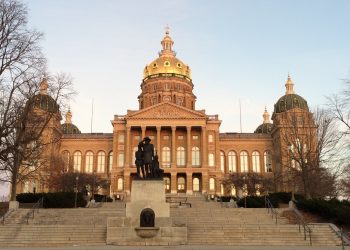(The Center Square) – Iowa legislators will tackle redistricting in a special legislative session this fall following the U.S. Census Bureau’s releasing 2020 data on each state on August 12.
The Census Bureau was due to deliver the data to the states by March 31 but there were delays, which the agency attributed to “COVID-19-related delays and prioritizing the delivery of the apportionment results.” Those delays tighten the timeline for redistricting.
Ordinarily, Iowa’s Legislative Services Agency would draft congressional and state legislative redistricting plans by April 1 for the legislature’s approval or rejection. If the legislature were to reject the agency’s plans, the agency would deliver a new set of plans within 35 days, which could be followed by the delivery of a third, final set of plans within 35 days of a second rejection. Iowa legislators would typically provide the governor legislative maps by Sept. 1 for enactment by Sept. 15 or surrender authority for redistricting to the Iowa Supreme Court.
Since the Census Bureau is sending data to the states later than Feb. 15, the Legislative Services Agency April 1 deadline is “extended by the same number of days by which the receipt of the necessary census information is delayed beyond February 15,” according to state documents. Following that rule would mean a deadline of Sept. 26 until the Iowa Supreme Court would take charge.
However, it may be even longer until redistricting is complete.
The Iowa Supreme Court has “signaled” to legislators that it will leave redistricting decisions up to them because the delays are not Iowa legislators’ doing, Speaker Pro Tempore Rep. John Wills, R-Spirit Lake, told The Center Square in a phone interview.
“They [the justices] don’t feel like it’s within their purview,” Wills said.
Wills said legislators will solely discuss the redistricting in the special session, which would occur when the Legislative Services Agency is able to deliver the first proposed redistricting plan. Wills said he hopes redistricting can be accomplished quickly, ideally by January 1 since candidates must file for congressional and state legislative primary elections by March 18, 2022.
“In all honesty and fairness, we need to give people as much time as we can so that people can decide if they want to run or if they can run [for office],” he said.
Once the Census Bureau releases the data to the states, the Iowa Secretary of State will first certify the population totals the U.S. Census Bureau provides. Iowa cities, counties, schools, and community colleges will later do any redrawing of their own districts.
“Iowa’s process for redistricting is a model for the rest of the nation because we take the politics out of it,” Iowa Secretary of State Paul Pate told The Center Square in an emailed statement. “The nonpartisan Legislative Services Agency creates the maps, and they are strictly forbidden from using political data. We’re the only state in the country that handles the process this way.”















